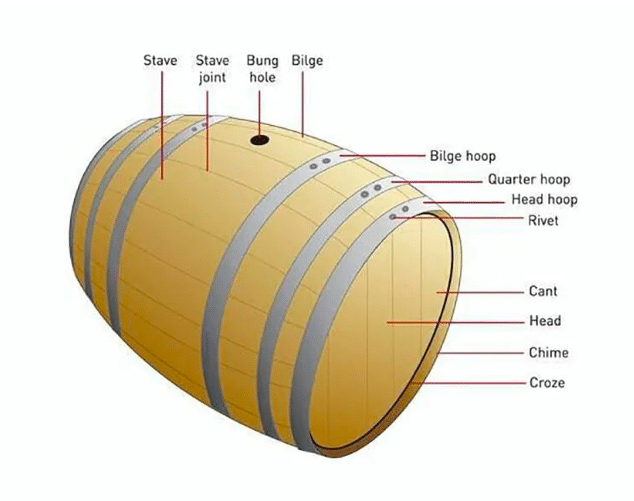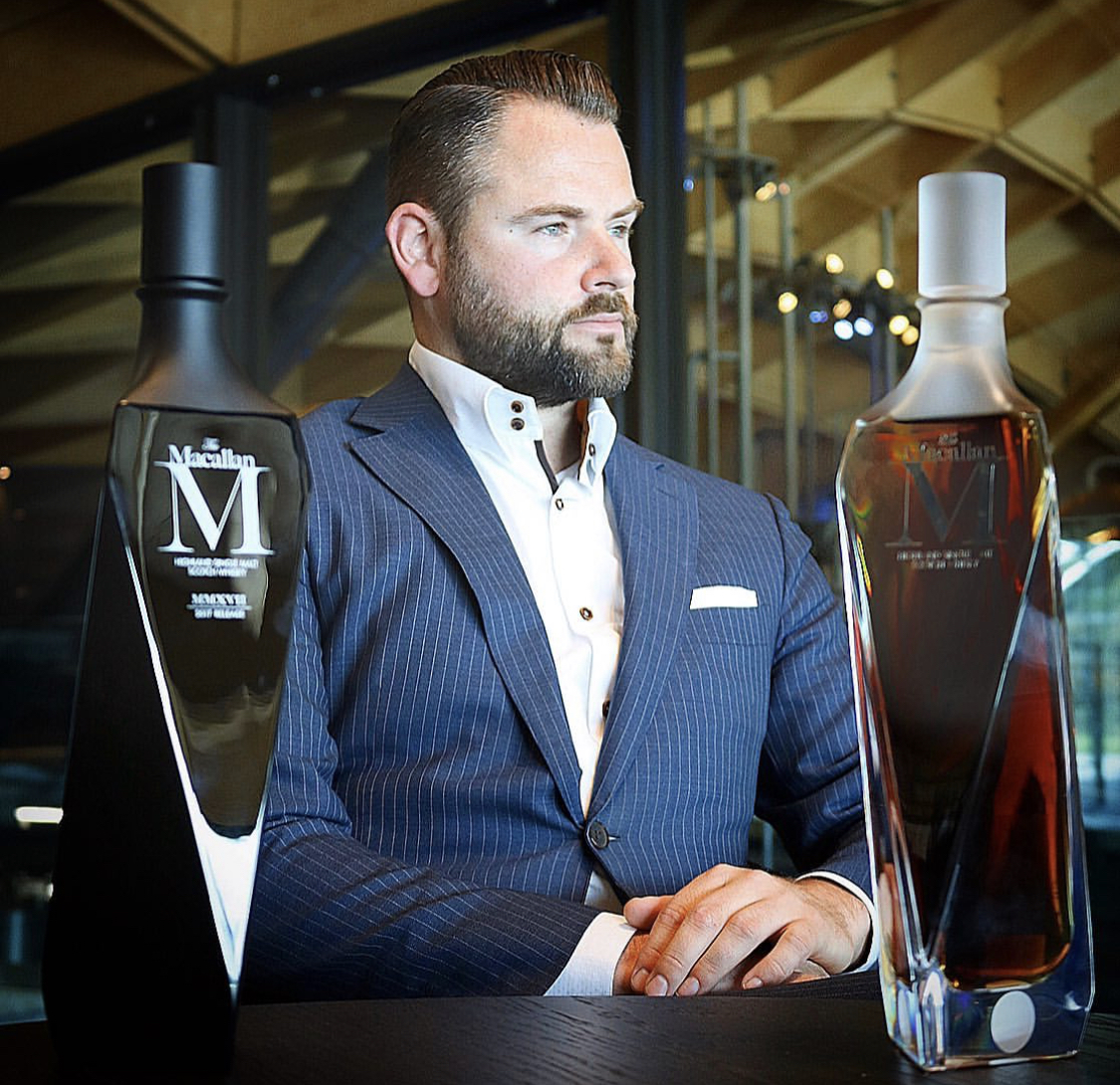Cask and Barrel sizes
Casks in all sizes
If you are maturing whisky, then its kept in oak casks. Sometimes called barrels, hogsheads or butts.
There are over 50 species of oak growing throughout the world but only a few types of oak are suitable for making barrels. It can take 100 – 150 years before the oak required to make a barrel is ready for harvesting, at which time it is specially selected for our casks.
Casks are sourced mainly from the US and Spain, where they have previously been used to age Bourbon, port, wine and sherry.
While Scotch whisky rules allow repeated use of casks for maturation, the law for Bourbon is such that they can only use the cask once. This normally ensures a good onward supply of casks for the Scotch whisky trade.
Most casks come in various sizes from about 200 to 1000 liters. 200 litres (barrel) and 250 (hogshead) are the most common sizes.
A hogshead is essentially a barrel made from the staves of a bourbon cask with new oak ends.
A butt is the standard size cask used for maturing sherry. As the interaction between wood and spirit is integral to the maturation process, smaller casks tend to mature Scotch whisky quicker. By contrast, large casks such as butts, puncheons or port pipes usually require a longer maturation process, often of 15-20 years or more.

1st fill & 2nd fill
Casks can be described as ‘first fill’ or ‘refill’. An American whiskey cask or barrel that is being used to mature Scotch for the first time is referred to as ‘first fill’. It becomes a ‘refill’ cask when used for a second or subsequent time. ‘First fill’ casks are more active in the maturation process of Scotch, imparting stronger flavours to the whisky from the oak and the previous contents of the barrel. ‘Refill’ barrels, by contrast, are usually less active in maturing Scotch, allowing the spirit to dominate the maturation process. The value of the casks within the maturation process can be seen in the costs for empty whisky barrels.
It is the job of a good cooper to maintain the casks well to extend their useful life and value, and to ensure they continue to mature the whisky to the right quality standards.
The casks are stacked either three high in traditional ‘dunnage’ warehouses or more commonly now in modern palletised warehouses. The key is to allow lots of cool, damp, Scottish air to circulate.
All casks are porous, allowing the spirit to evaporate which is necessary for maturation. A small number of casks may leak, and lose more whisky than they should in the first year. In modern warehouses leaky casks are usually left where they are, because moving them around to sort out a leaky one costs almost as much as a cask of newly made spirit is worth, and risks damaging others in the process.
Losses from evaporation and leakage amount to around 2% per year, with an extra 3% lost on filling as spirit is absorbed by the wood. This is known as ‘in-drink’.
Good casks, well cared for, can last for up to 50 years or longer.
whisky barrel capacities
| Whisky barrel | Approximate capacity (Litres) | LPA (Litres of Pure Alcohol approximate) | Wood used for barrel |
|---|---|---|---|
| Barrel | 190-200 | 120-140 | Oak – American, French or Spanish |
| Hogshead | 225-250 | 142-175 | Oak – American, French or Spanish |
| Barrique | 250-300 | 159-210 | Oak – American, French or Spanish |
| Quarter cask | 45-50 | 29-35 | Oak – American, French or Spanish |
| Butt | 475-500 | 302-350 | Oak – American, French or Spanish |
| Puncheon | 450-500 | 286-350 | Oak – American, French or Spanish |
| Port pipe | 550-650 | 350-455 | Oak – American, French or Spanish |
| Madeira drum | 600-650 | 381-455 | Oak – American, French or Spanish |
Barrel Anatomy Terminology
You can index a standard barrel as follow:
- Stave – A narrow piece of wood with a beveled edge that together with other staves makes up the sides of a barrel.
- Head – The round flat sections that form the top and bottom of a barrel.
- Bung Hole – The hole in a water tight barrel.
- Bung – The plug is is used to keep liquid from coming out of the barrel bung hole.
- Bilge – The center of a barrel’s bulge.
- Hoops – Round iron bands that are used to hold a barrel together.
- Chime – The beveled end of linked staves that holds the barrel heads in place.


Quarter Cask
Quarter cask (approx. 45-50 litres | ~29-35 LPA): A quarter cask is a quarter of the size of the ASB, but with the same dimensions. As quarter casks have a significantly higher ratio of wood-to-liquid than most standard casks, they tend to accelerate the maturation process. However, this method of maturation can have mixed results, and quarter casks are therefore most effective with more robust spirits, or when used to ‘finish’ a whisky.
A quarter cask produce up to 71 bottles of 70 cl. The USA bottles are 75 cl so a Quarter cask can hold up 66 bottles of 75 cl.
Barrel
Barrel (approx. 190-200 litres | ~120-140 LPA): Also known as the ASB (American standard barrel), or bourbon barrel, due to its role as the principal size of cask used in the American bourbon whiskey industry. Barrels used for maturing bourbon are required by American law to be made from American white oak which has been charred prior to usage. As these casks cannot be re-used to make bourbon, they often experience a second life maturing Scotch whisky.
The American standard barrel is known as the barrel for short. Barrels can hold 190-200 litres and yield 271-285 70cl bottles, or 253-266 75cl bottles of whisky.



Hogshead
Hogsheads hold approximately 225-250 litres of liquid, meaning that they can yield up to 357 70cl bottles of whisky. In the USA they use 75cl bottles as standard, meaning that a hogshead can produce up to 333 75cl bottles.
Barrique
Barrique (approx. 250-300 litres | ~159-210 LPA): A barrique is a slightly larger hogshead with the long shape of a butt, which is common throughout the wine industry (and, with slightly smaller dimensions, in Cognac too). Barriques are usually constructed from French oak, although some may also be made from American white oak. Although barriques were historically uncommon in the maturation of Scotch whisky, recent decades have seen an increasing amount of single malts and blends experimenting with these casks.
They can yield 357-428 70cl bottles, or 333-400 75cl bottles of whisky.


Butt
From these casks you can expect 678-714 70cl bottles or 633-666 75cl bottles.
Puncheon
Puncheon (approx. 450-500 litres| ~286-350 LPA): After butts, puncheons are the second-most common type of casks used to mature sherry. Dumpier than a butt, these are generally made with Spanish oak staves. Machine puncheons are made from American white oak and generally used in the rum industry. While machine puncheons are still rarely used for maturing Scotch, they have become more common in recent years.
Puncheons can yield 408-500 70cl bottles or 381-400 75cl bottles due to their 450-500 litre volume.


Port Pipe
Port pipe (approx. 550-650 litres | ~350-455 LPA): Port pipes are the industry standard cask for maturing port wine. Port pipes are long and similar in proportion to sherry butts, although their width is close to an ASB. Port pipes are generally only used to ‘finish’ Scotch whiskies for a final few years.
They can hold 550-650 litres of liquid, yielding 785-928 70cl bottles or 733-866 75cl bottles.
Madeira drum
Madeira drum (approx. 600-650 litres | ~381-455 LPA): Like sherry butts and port pipes, Madeira drums are the industry standard for maturing Madeira wine. However, Madeira drums are significantly squatter than these counterparts, and are built from thick French oak staves. Madeira drums are relatively uncommon for maturing Scotch whisky and are generally used to ‘finish’ aged stocks.
Madeira drums can hold 600-650 litres of liquid and yield 857-928 70cl bottles or 800-866 75cl bottles of whisky.


Tun
Tun Cask (approx. 1000 liters | ~ 800 LPA): These casks are used for barraging different kinds of cask together. these casks aren’t used for maturation because my Scottish law you can not maturate scotch in a barrel more then 700 litters.
Tun can hold 9500-1000 litres of liquid and yield 1380-1428 70cl bottles or 1300-1333 75cl bottles of whisky.
